To provide the best experiences, we use technologies like cookies to store and/or access device information. Consenting to these technologies will allow us to process data such as browsing behavior or unique IDs on this site. Not consenting or withdrawing consent, may adversely affect certain features and functions.
The technical storage or access is strictly necessary for the legitimate purpose of enabling the use of a specific service explicitly requested by the subscriber or user, or for the sole purpose of carrying out the transmission of a communication over an electronic communications network.
The technical storage or access is necessary for the legitimate purpose of storing preferences that are not requested by the subscriber or user.
The technical storage or access that is used exclusively for statistical purposes.
The technical storage or access that is used exclusively for anonymous statistical purposes. Without a subpoena, voluntary compliance on the part of your Internet Service Provider, or additional records from a third party, information stored or retrieved for this purpose alone cannot usually be used to identify you.
The technical storage or access is required to create user profiles to send advertising, or to track the user on a website or across several websites for similar marketing purposes.
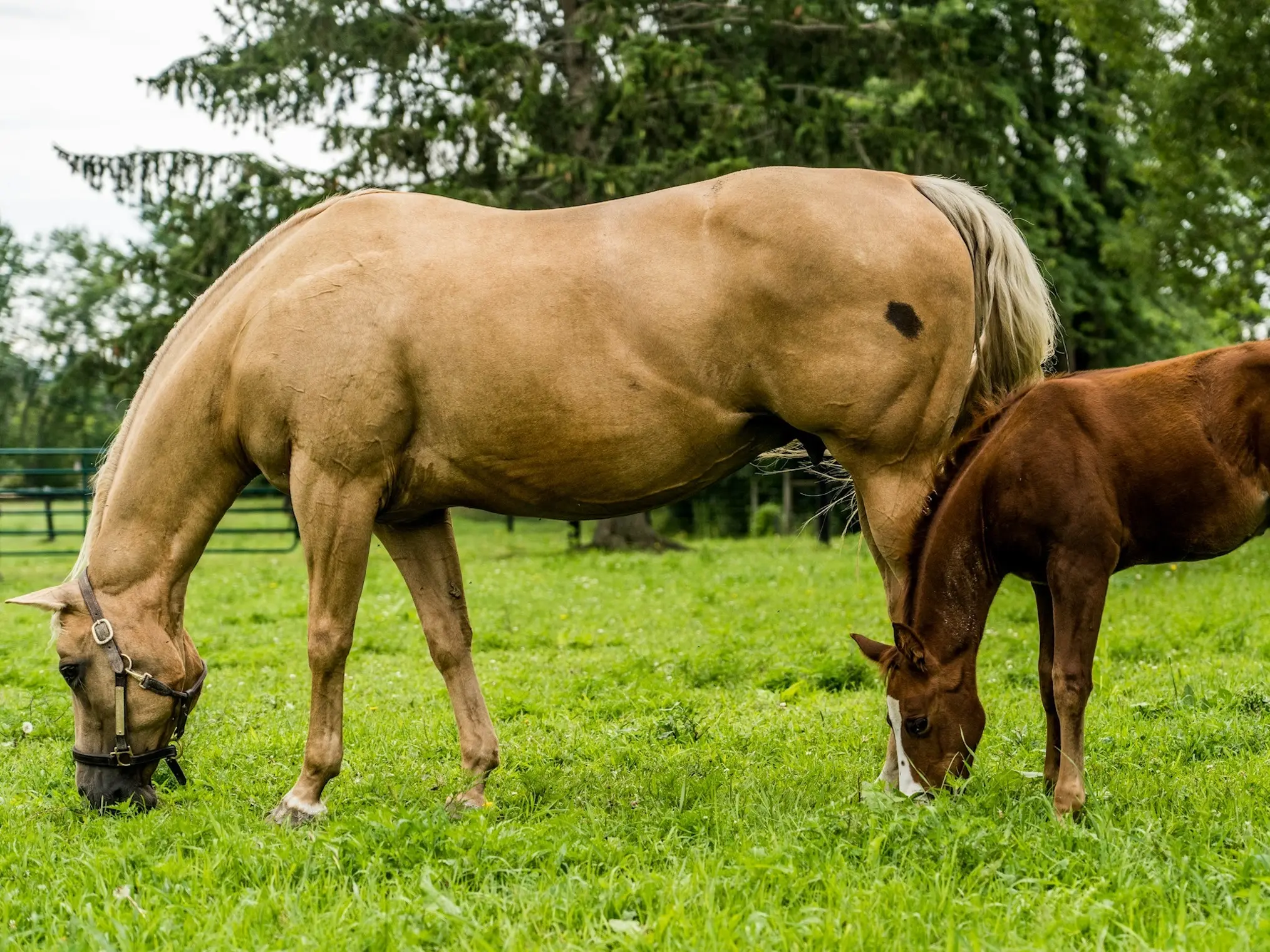 Bend Or Spots
Bend Or Spots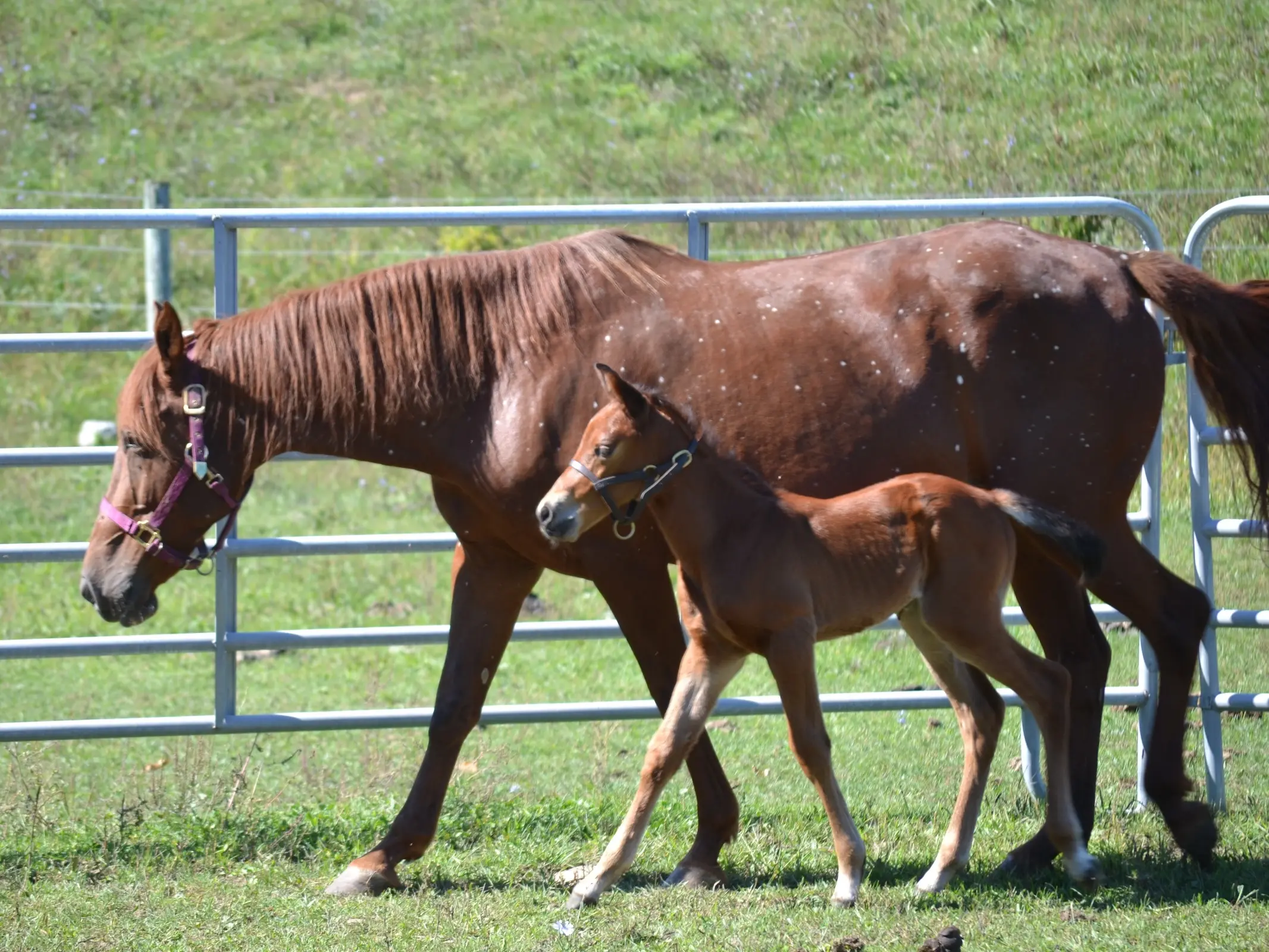 Birdcatcher Spots
Birdcatcher Spots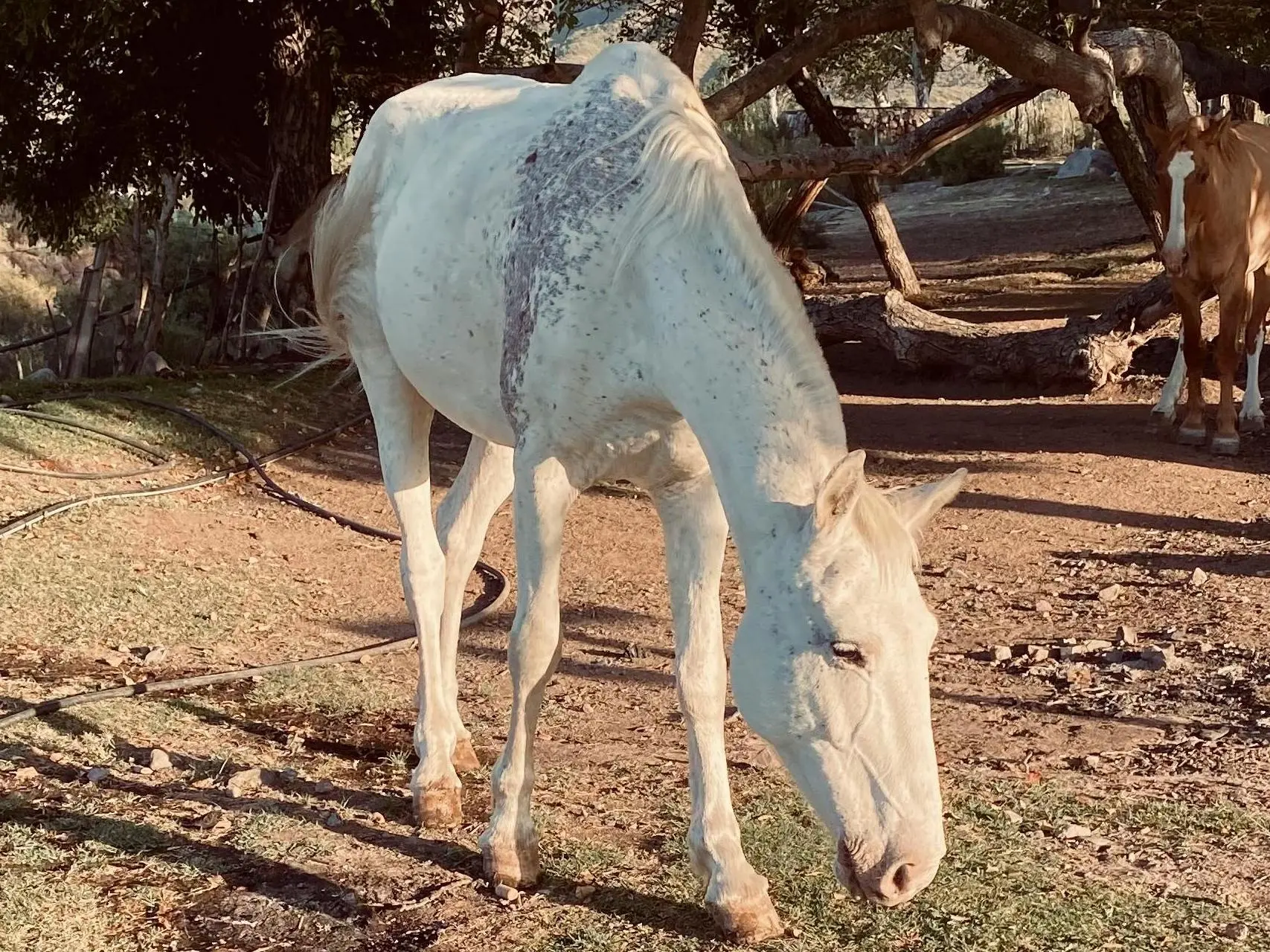 Blood Marks
Blood Marks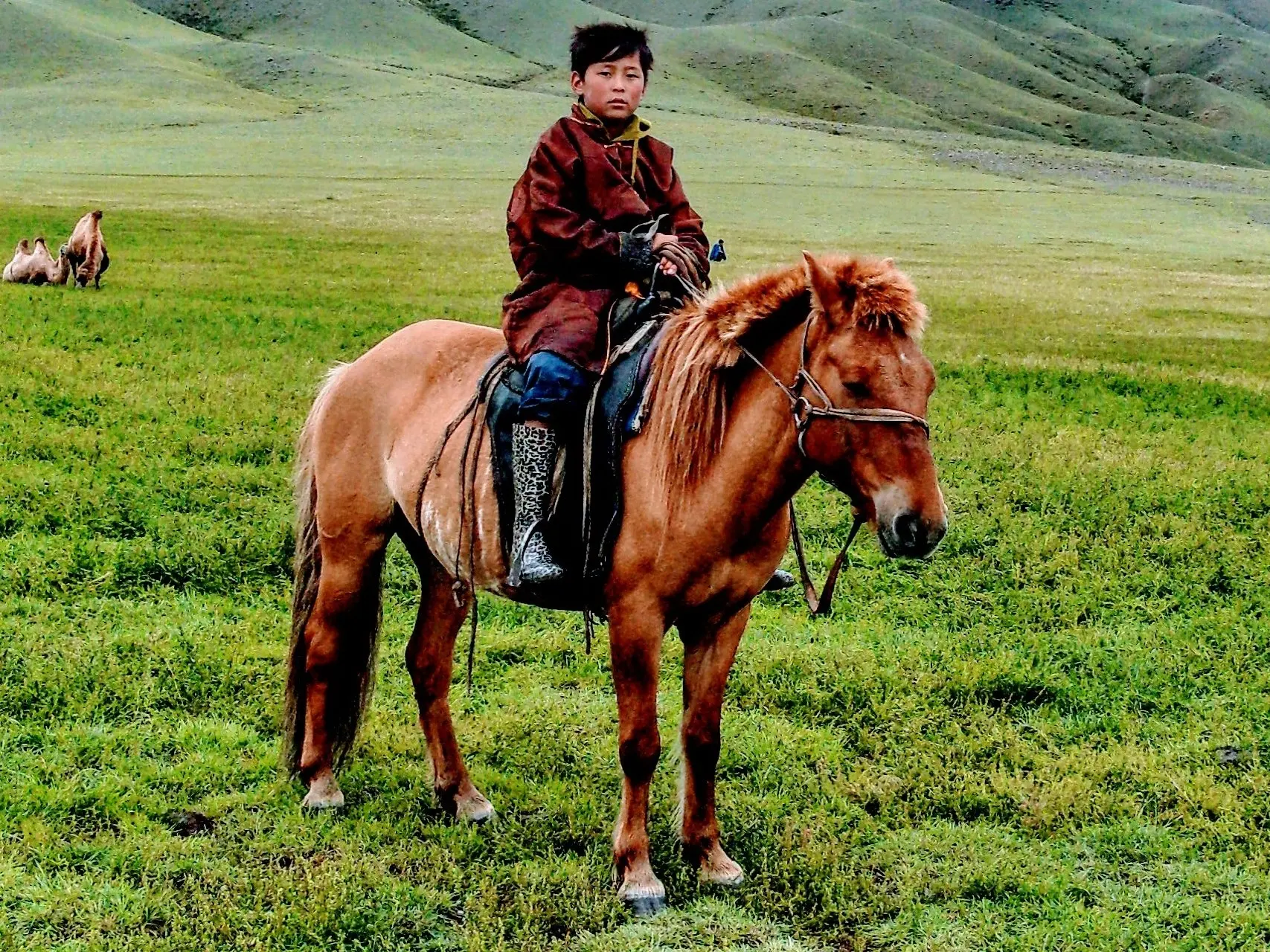 Brindle
Brindle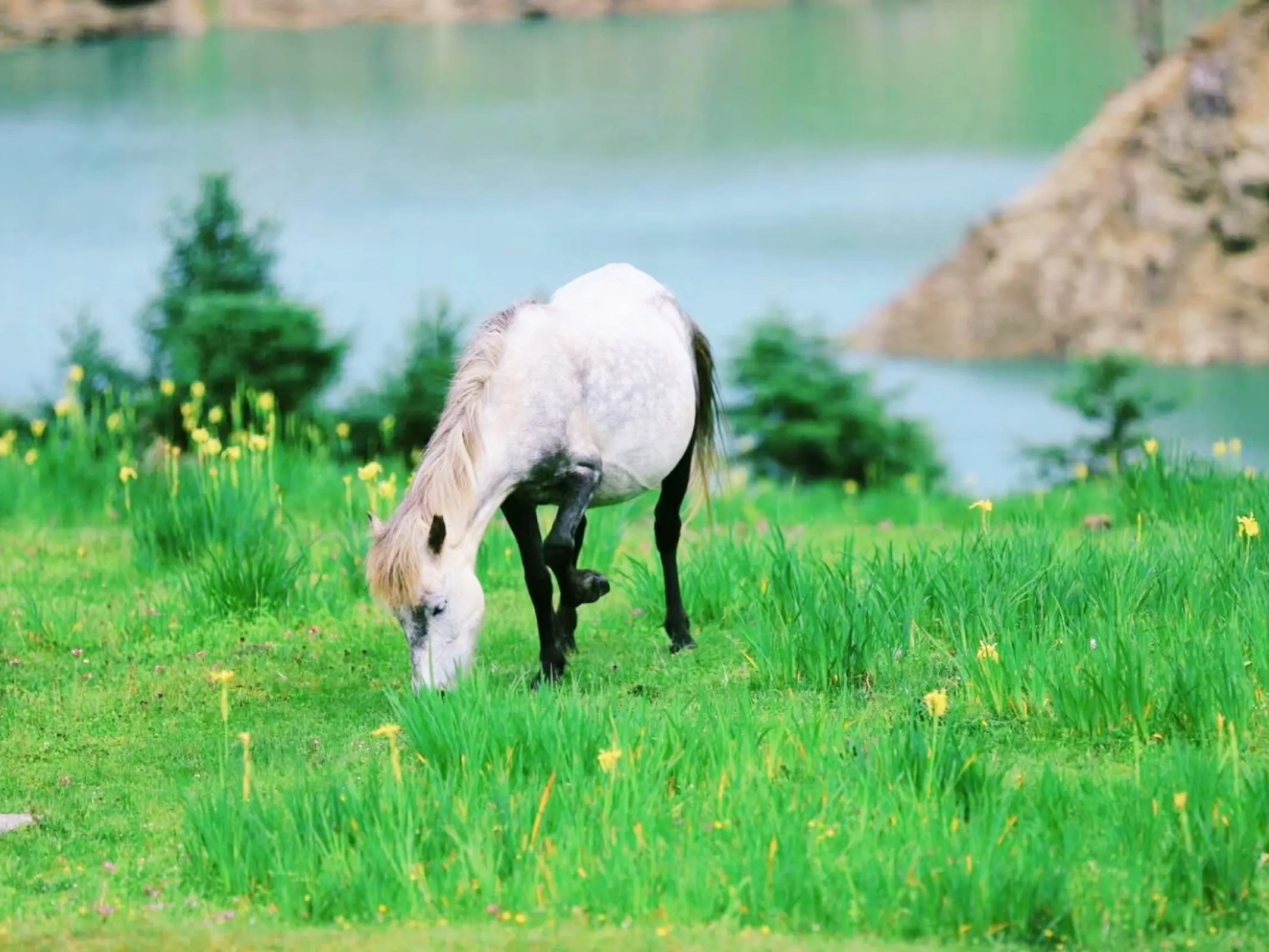 Chimera
Chimera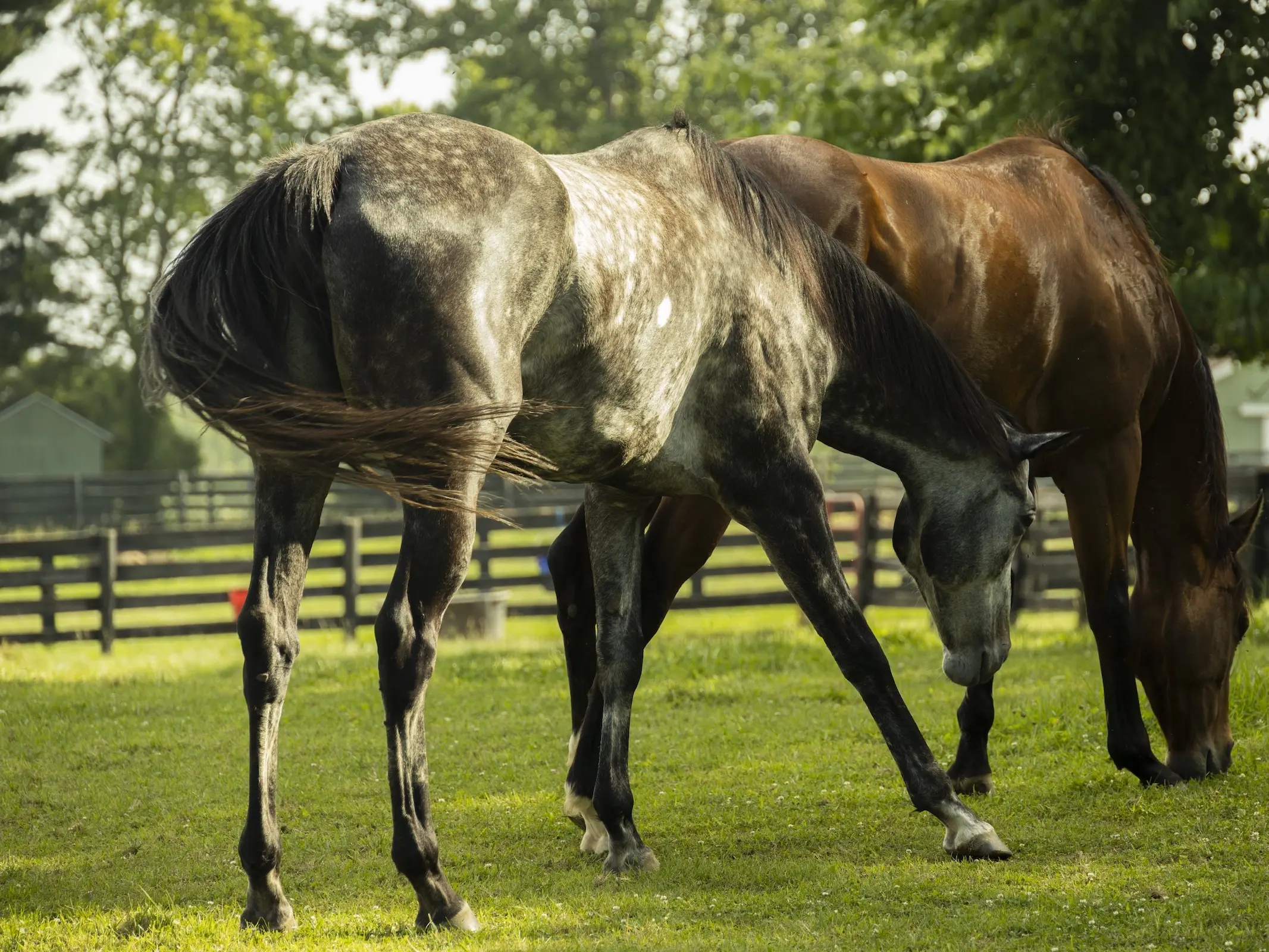 Chubari Marks
Chubari Marks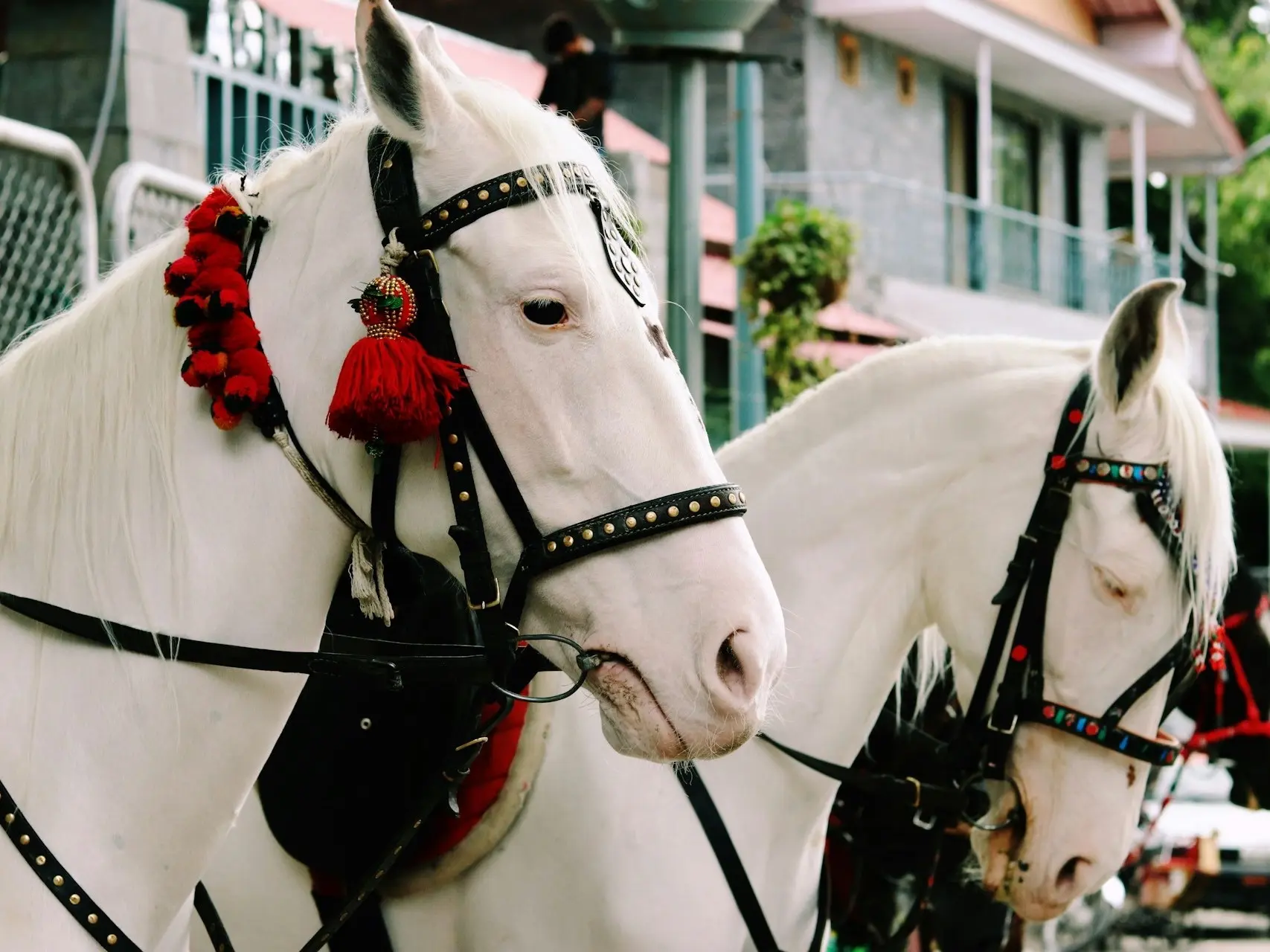 Dominant White
Dominant White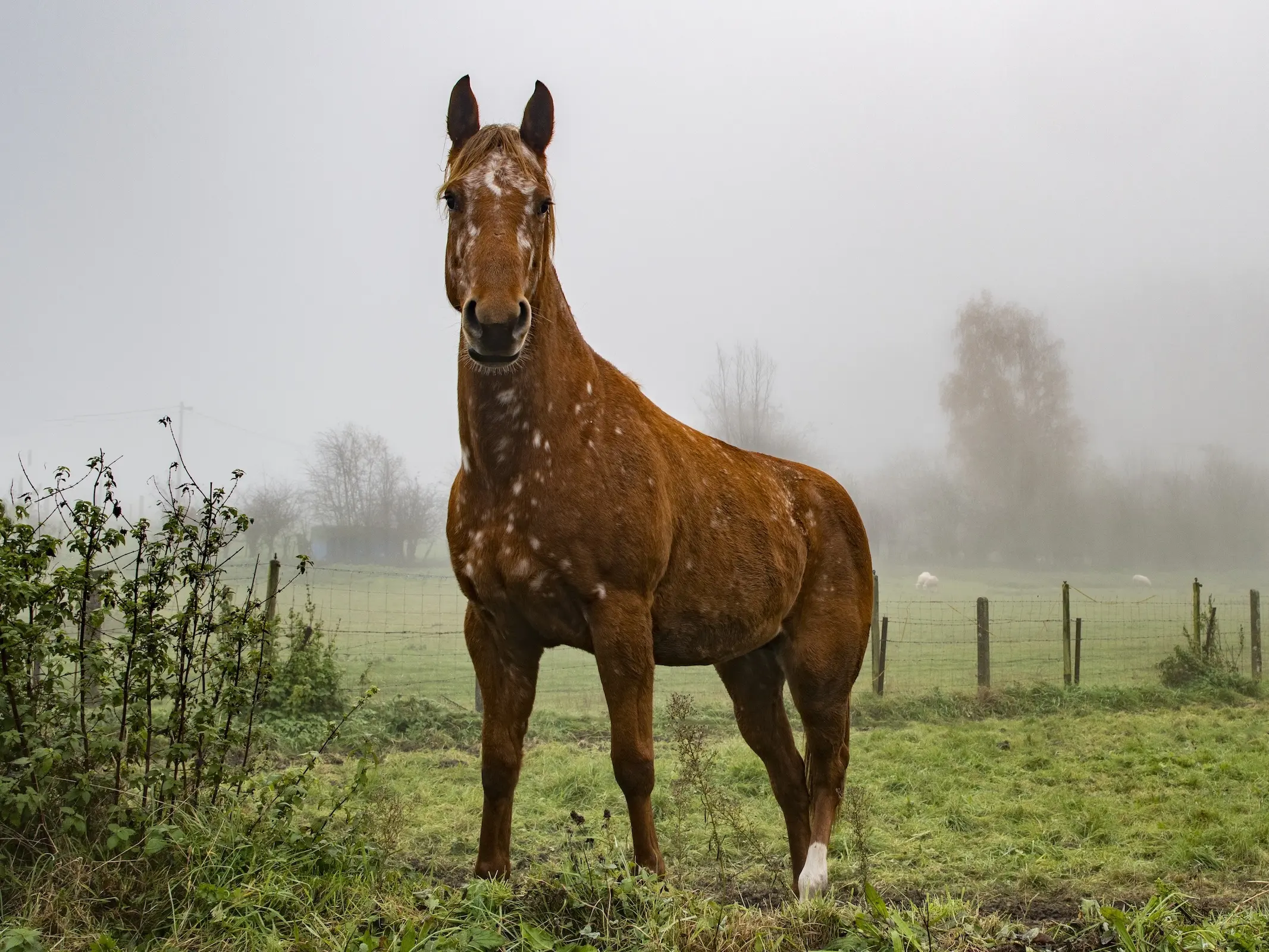 Fungal Marks
Fungal Marks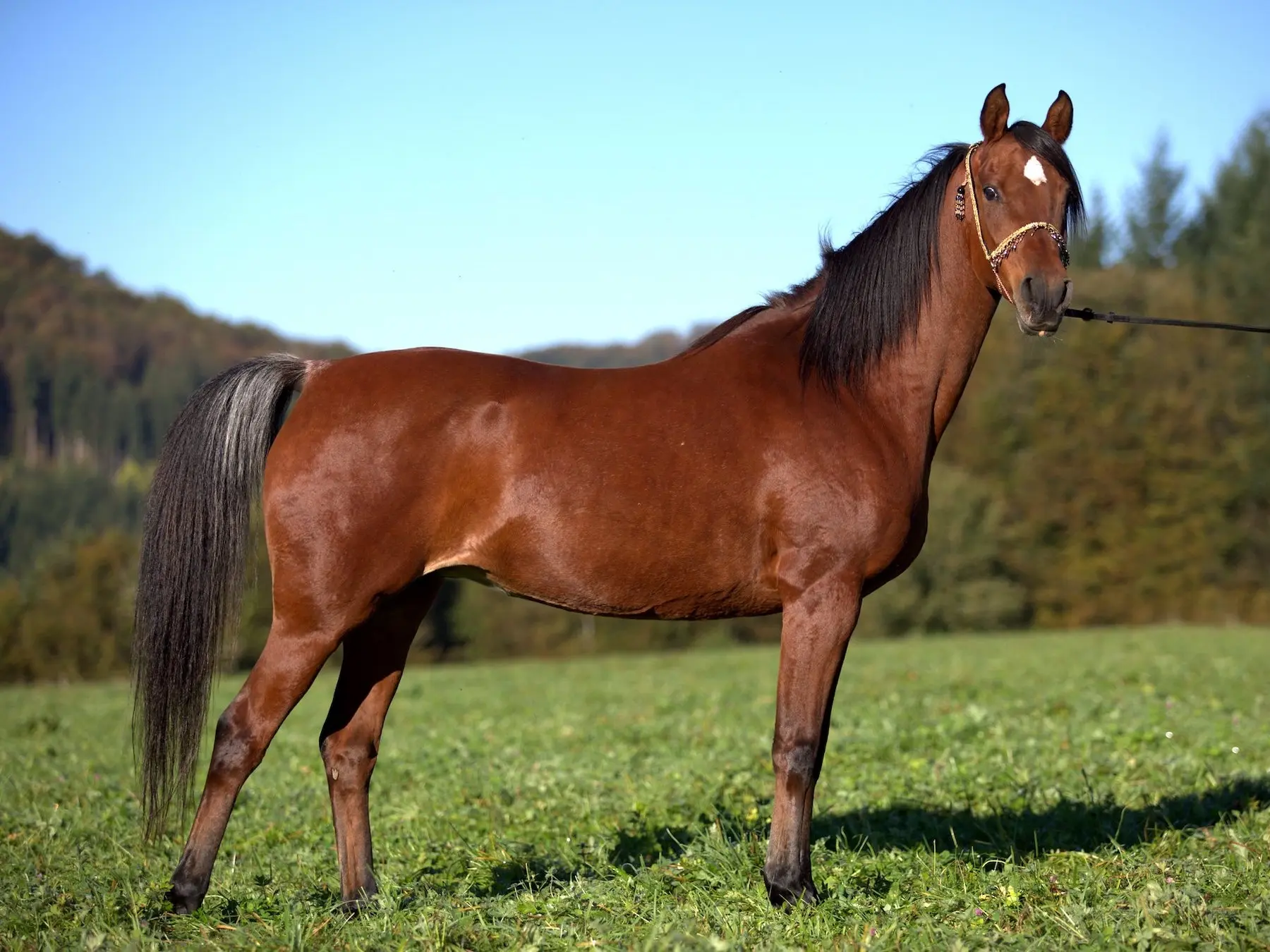 Gulastra Plume
Gulastra Plume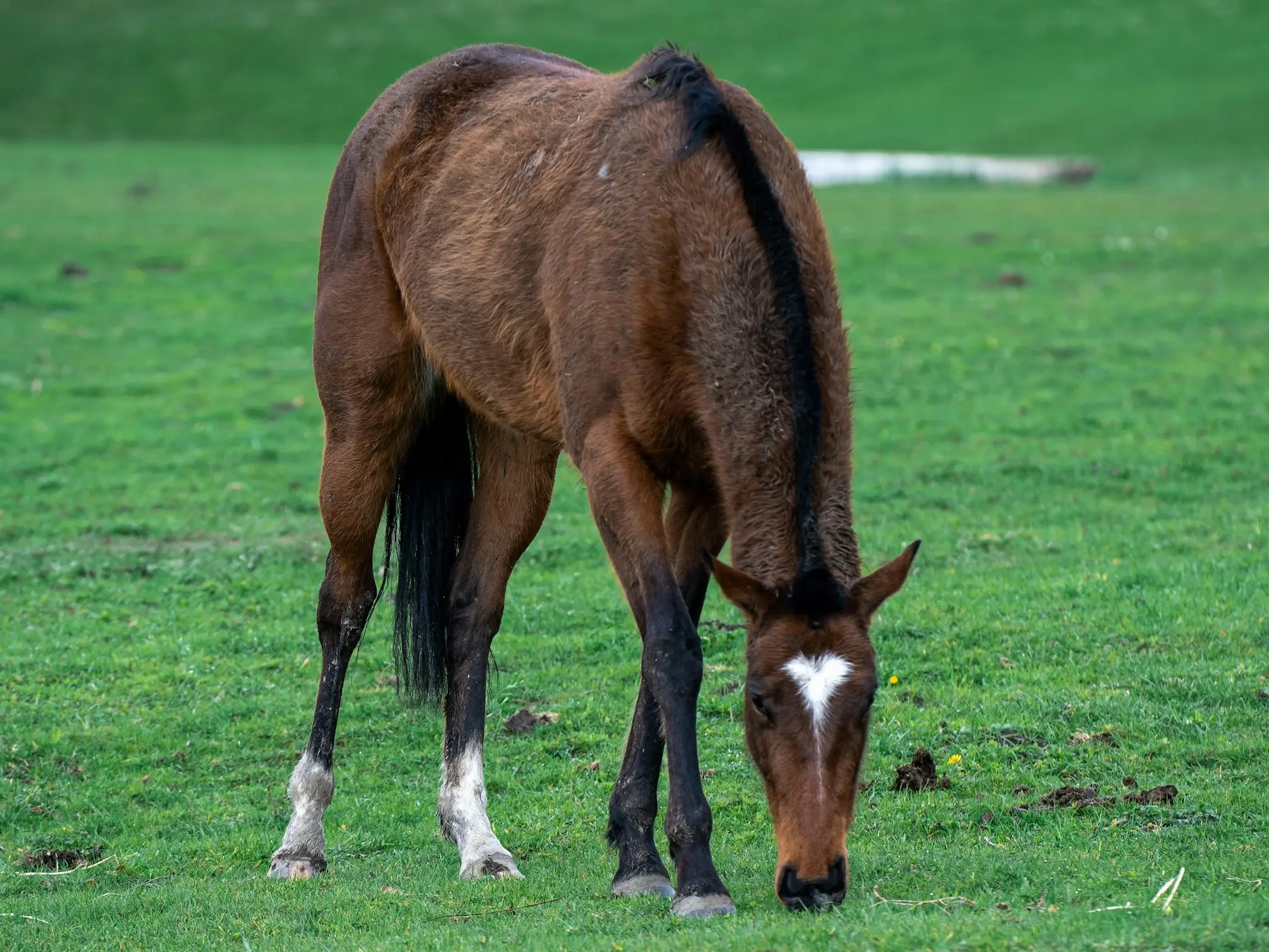 Heart
Heart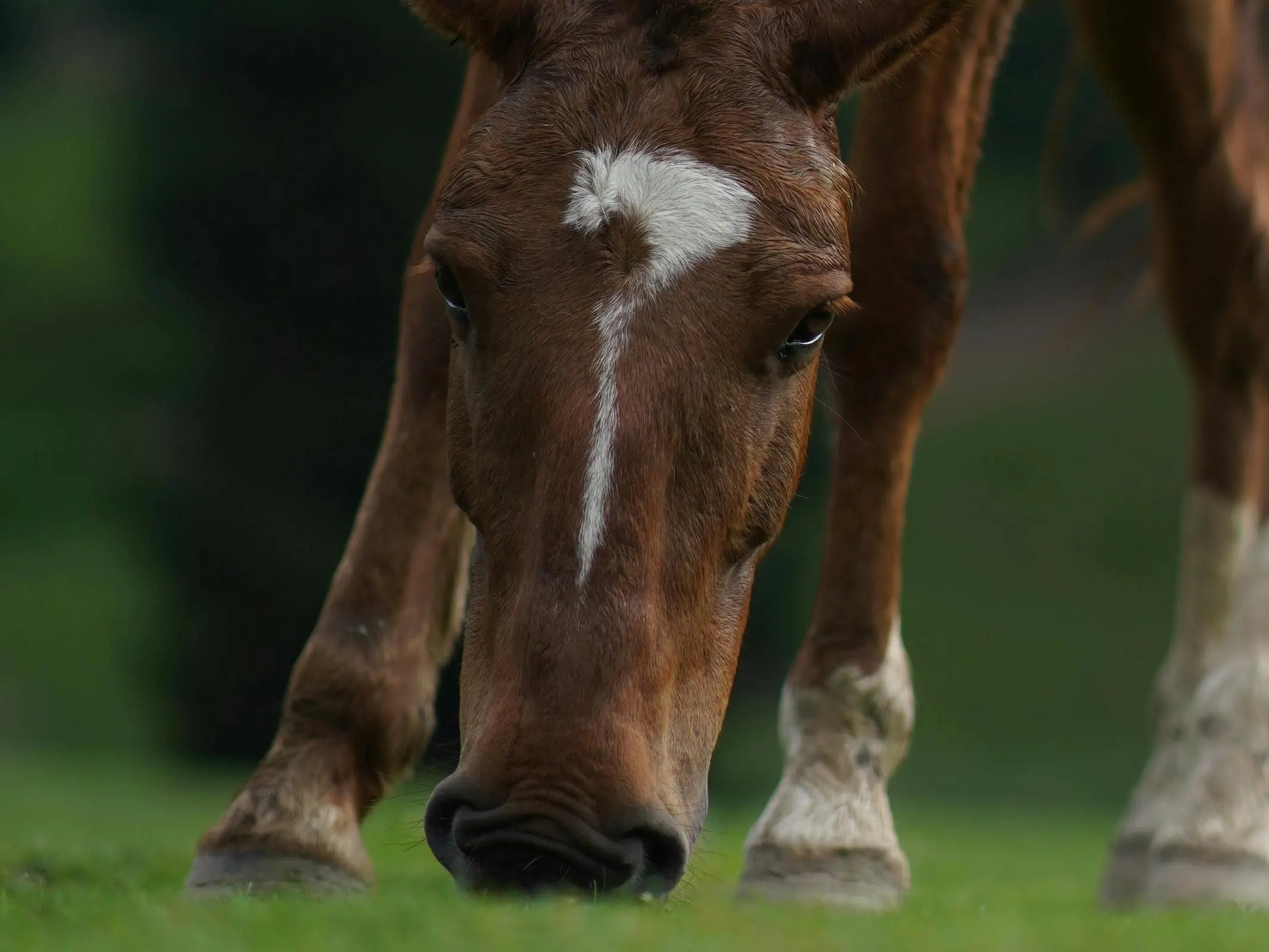 Horse
Horse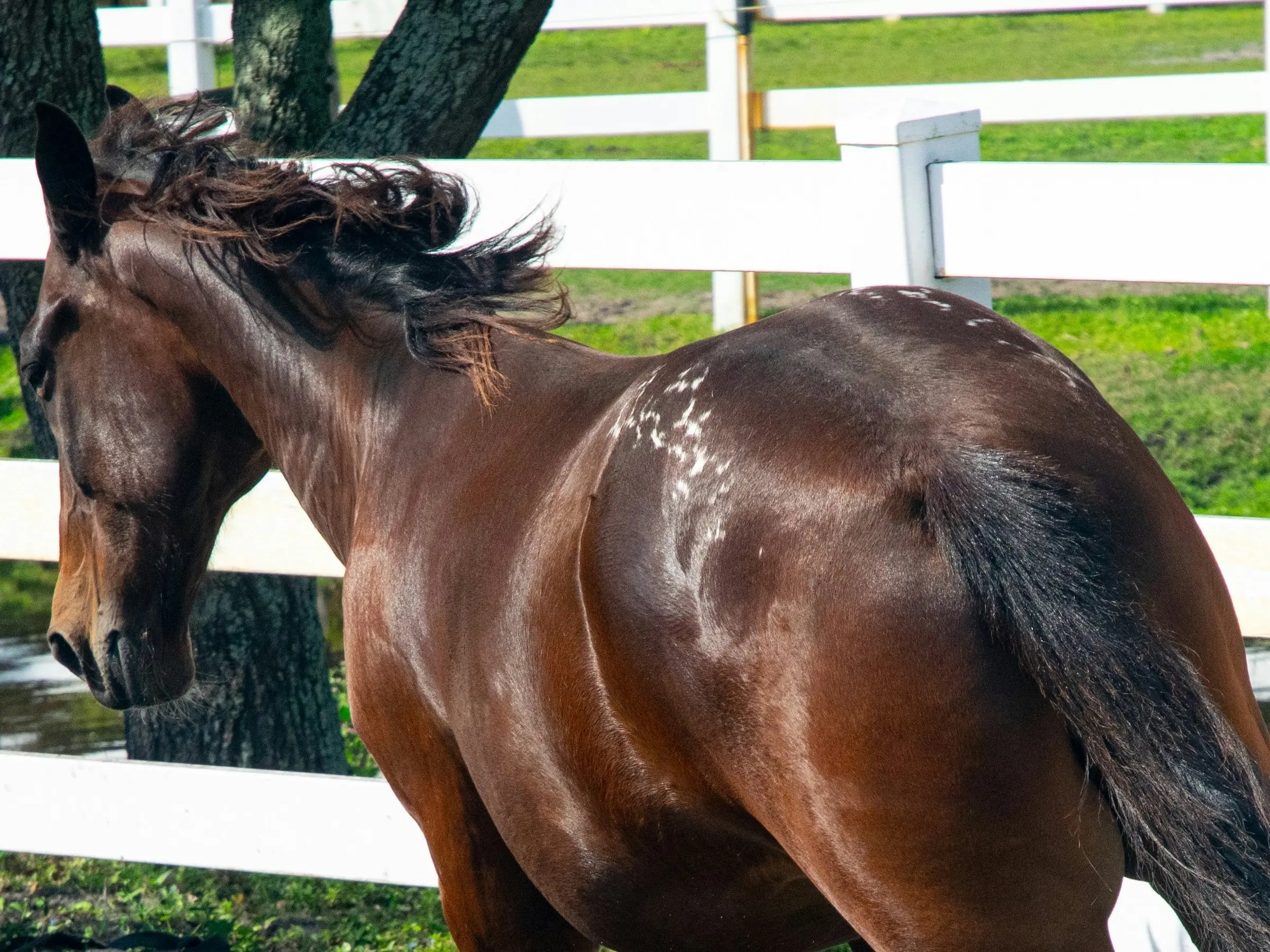 Lacing
Lacing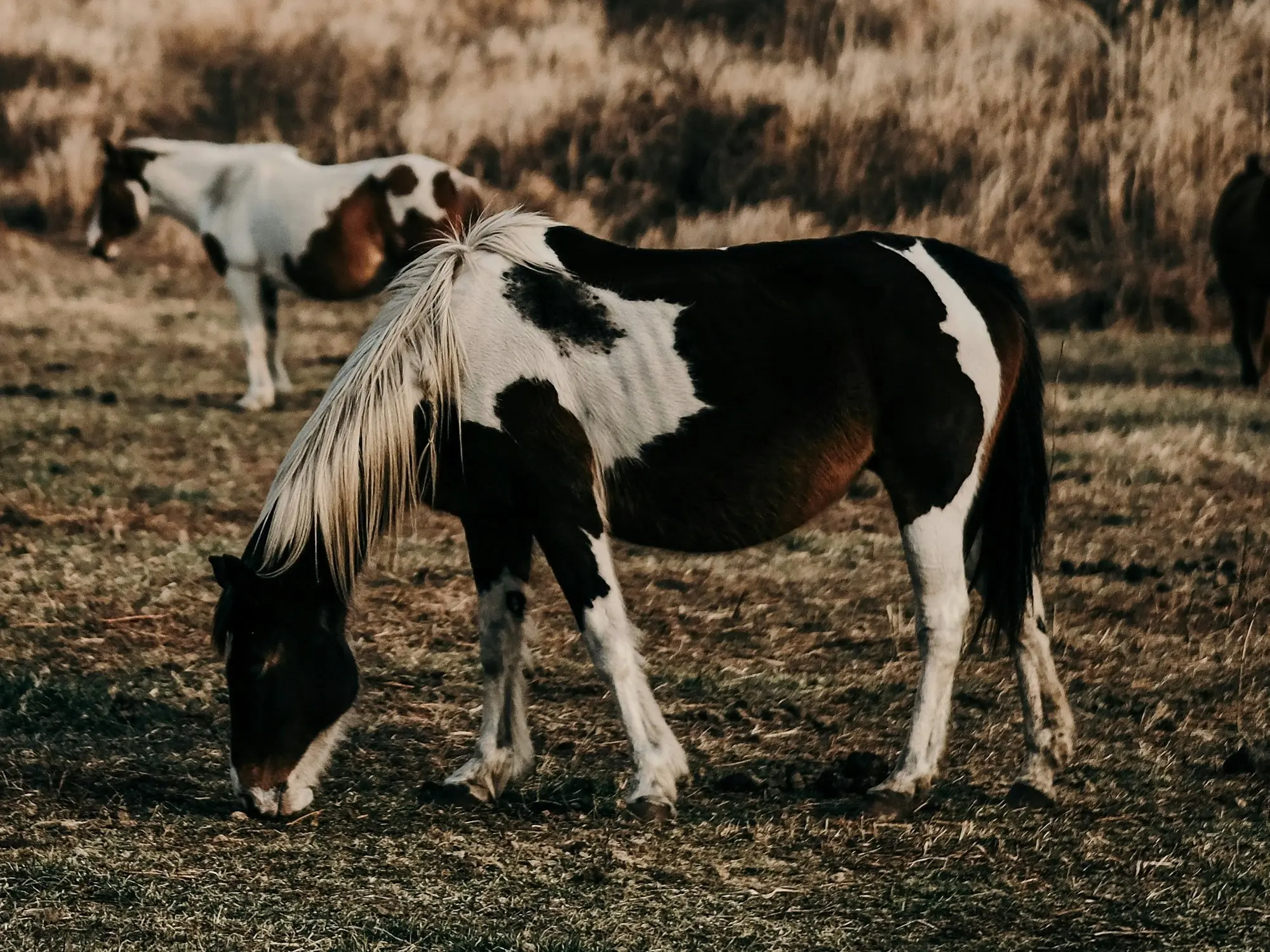 Moasic
Moasic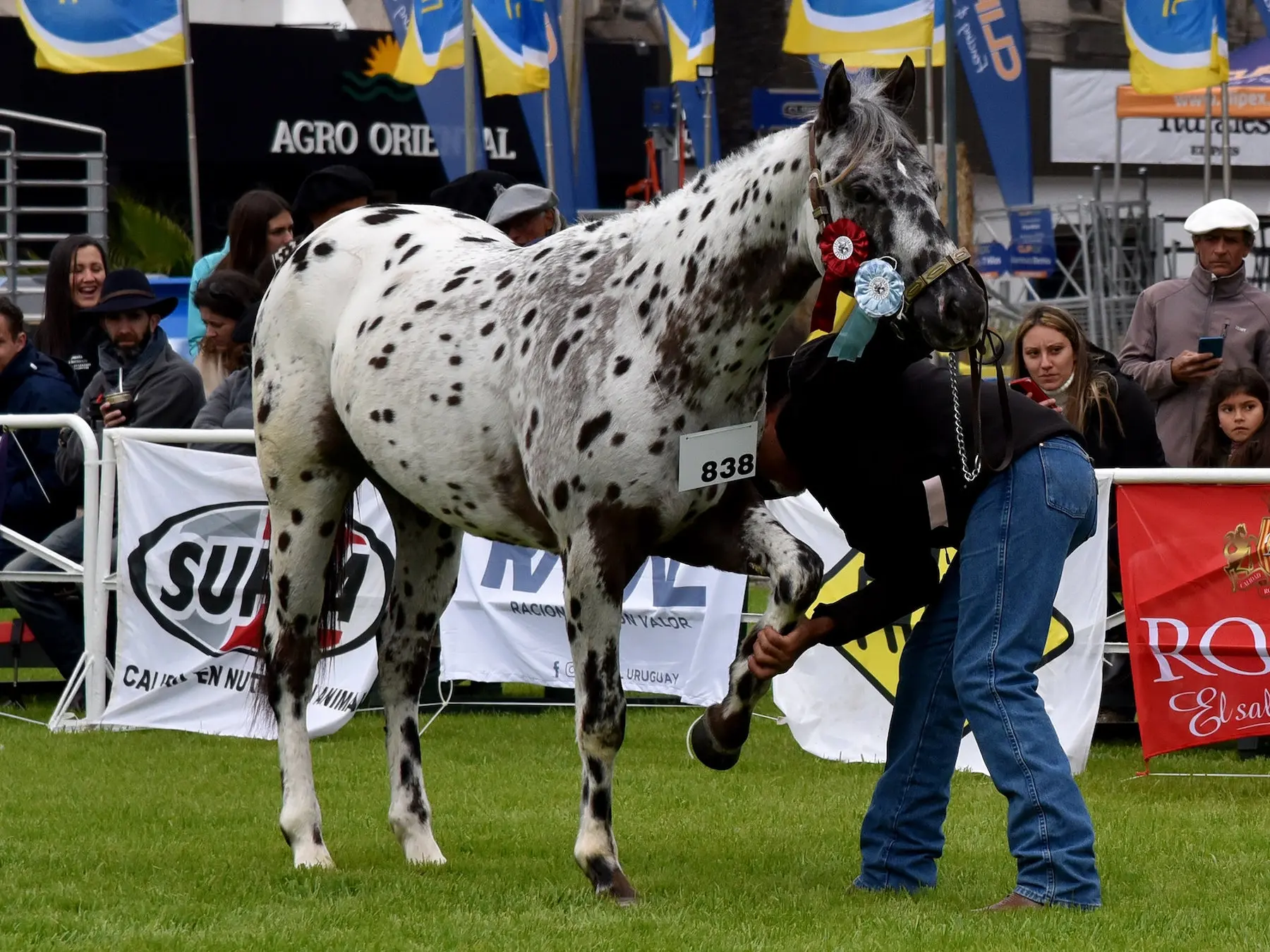 Peacock
Peacock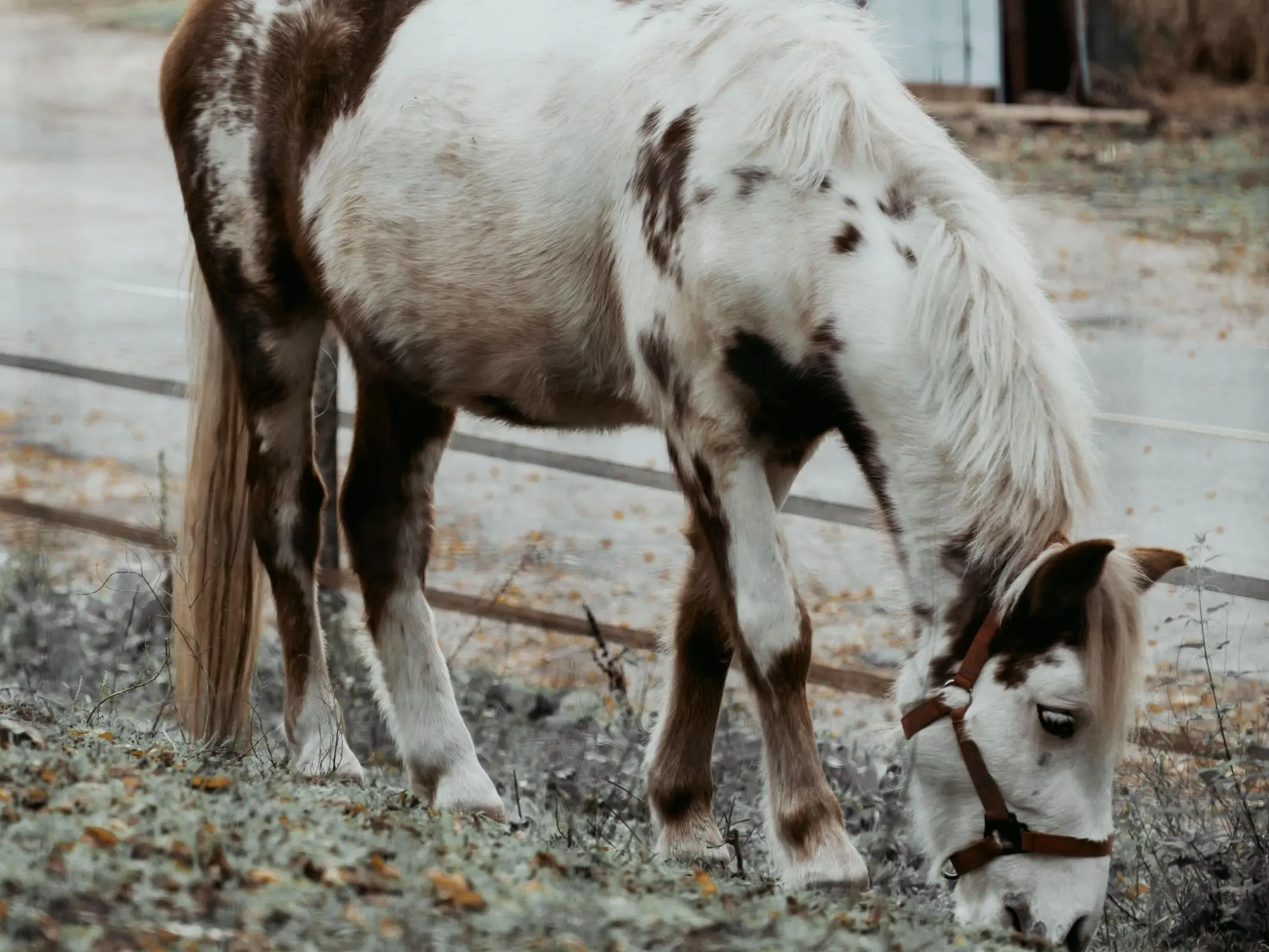 Pintaloosa
Pintaloosa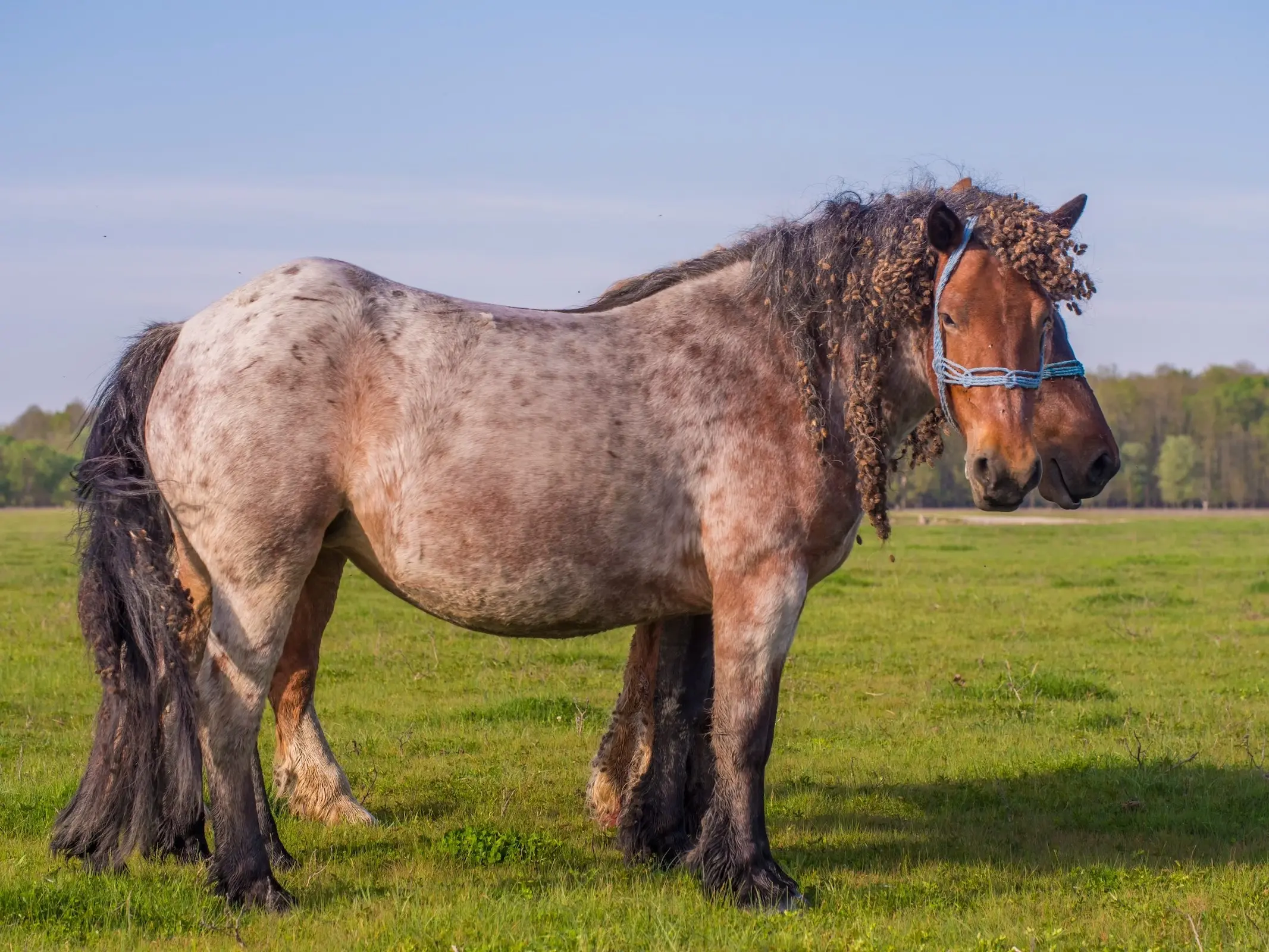 Reverse Dappling
Reverse Dappling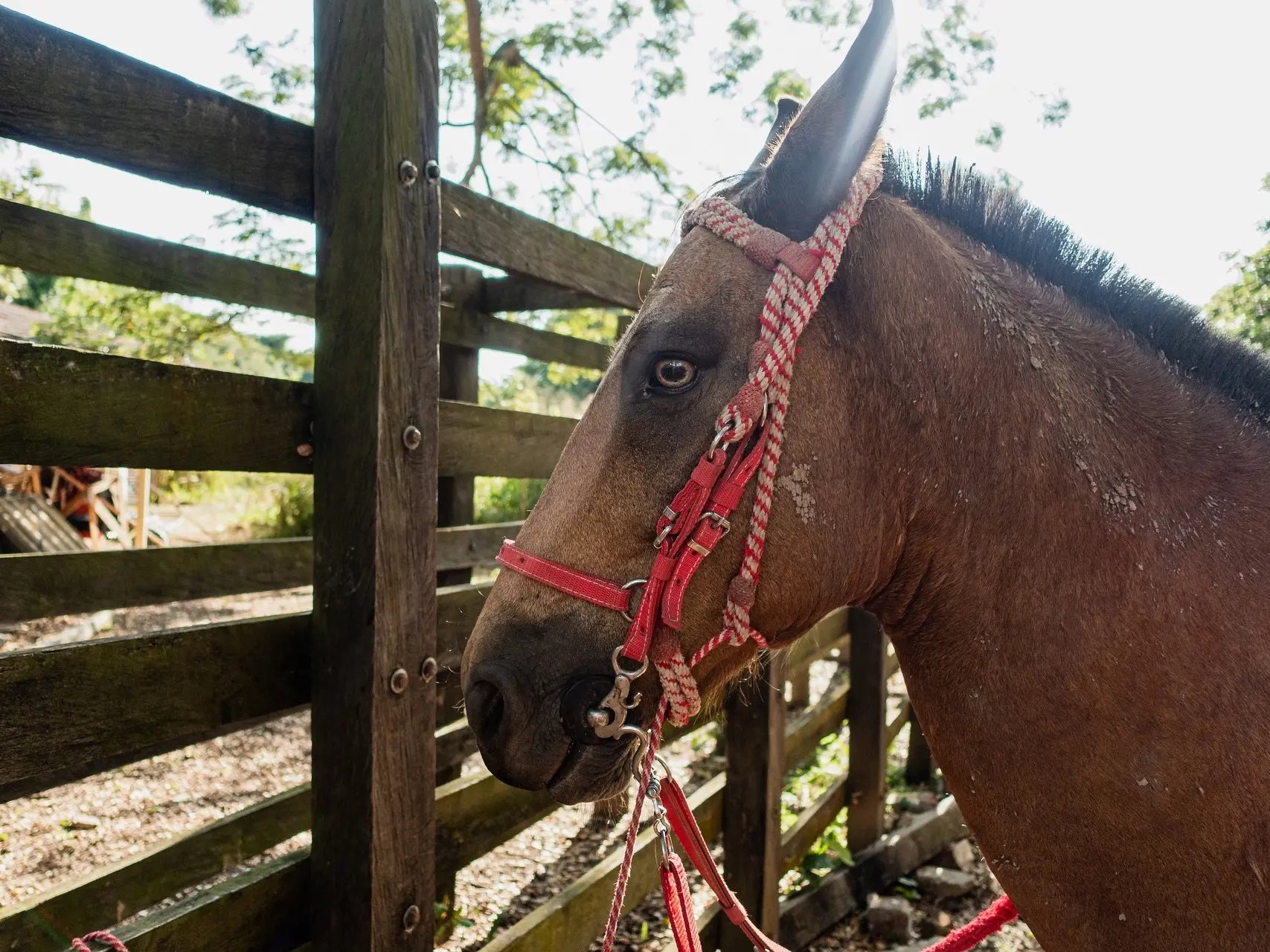 Tiger Eye
Tiger Eye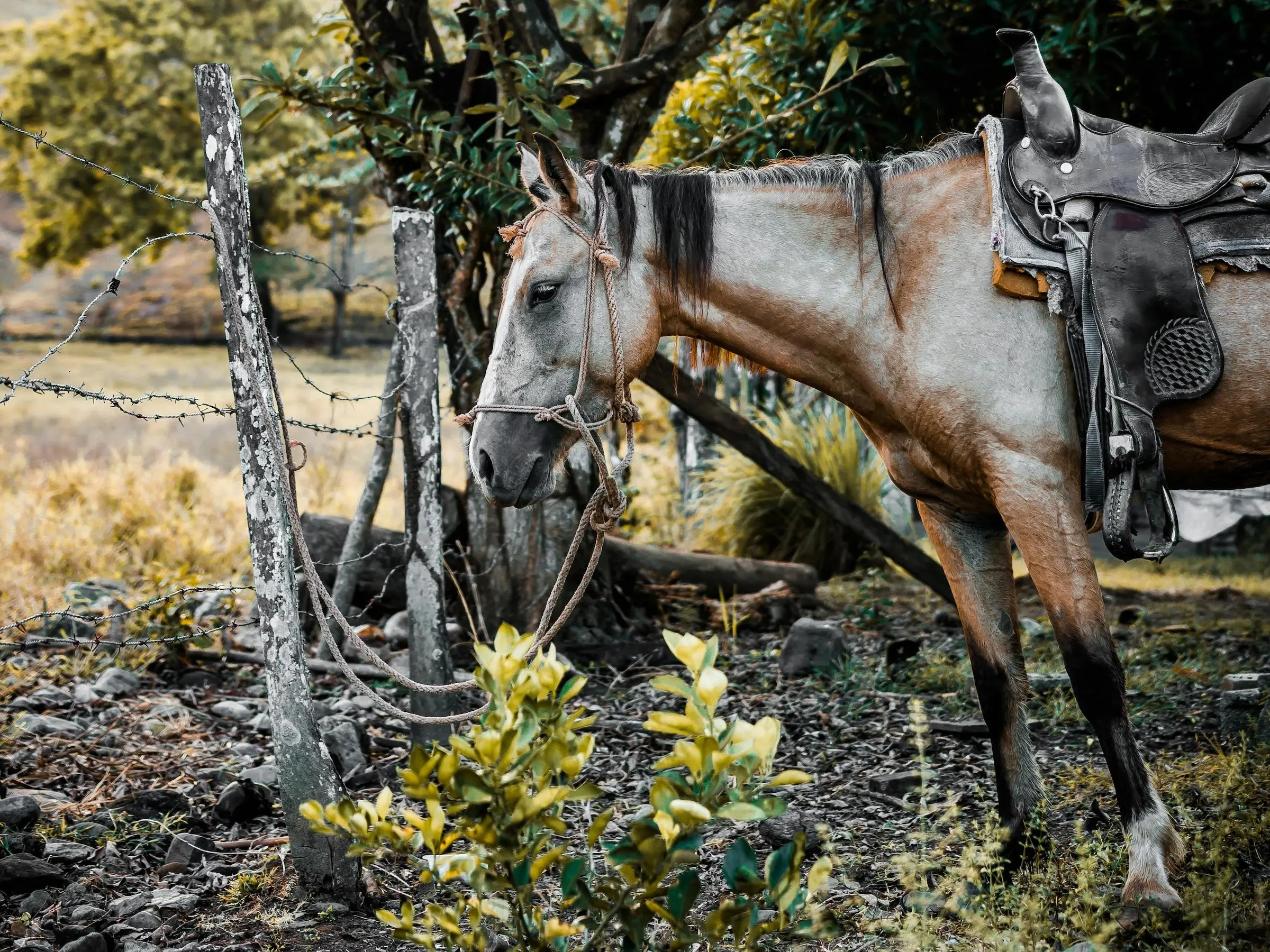 Unkown
Unkown
You are amazing – love you.
you are awesome. I love this!!
black horses are sooo beautiful
I thought, in order to qualify as a TRUE black, the hose could have NO white markings at all…
A true black horse is one with no red hairs in their coat due to genetics. Black is one of the to base coat colors.
As long as white markings are not due to a grey modifier, a roan, paint/pinto, or appaloosa white pattern, than I believe a true black horse can have white markings.
Wow.
I really like the horse pics. I had no idea palomino was rare. I have a Silver dappled mare, and I had no idea what color she was. I was told she was chocolate palomino and then I was told she was just plain old brow, but now I finally know!
Kiley
i just bought a black horse that has light dappleing, and he’s black black. here’s a pic of him for an example. i dont know if this is rare or not but i had ever seen this kind of coloring befor.
View Image
he’s very furry at the moment so sorry about the bad pic.
I have a very similar horse to yours, from his head he he could be our Shalako. He is an araloosa – that is an appaloosa/arab cross. His father is a black arab. As he has got older the dappling has disappeared but at 8 it was very prominent, and, I guess, an expression of the appaloosa spot in a black coat.
Hi Catherine,
He’s cute, what’s his name?
Looks like a black horse to me. Fading-black would be my guess, they tend to dapple because their black color fades with age and exposure to sunlight.
he is sooooooooo cute i love him
i aint to sure but idk if black or buckskin are rare colors
This information is mostly false. The albino gene can be rare, but is hardly ever fatal. Black horses are not rare at all, but they do get washed out after their prime. Buckskins are one of the most common colors, and do NOT always have blue eyes. They hardly ever do. There is no such thing as a white horse- that horse was albino. You can have a light gray or a albino. Palominos have been distinguished as a legal breed. The “silver dapple” is called a chocolate palomino or a flaxen chestnut. The brindle is the only correct one. Next time you try to help people, please have your facts straight.
there are white horses a horse that carries to copies of the sb1 (sabino) is often completely white and is not albino.
Hi Kate,
I thought your comment deserved addressing. Horse color genetics are often misunderstood, so I agree it is important to provide accurate information. In fact, I wrote a whole post about it.
I appreciate your trying to prove me wrong, but I have been riding for several years. I’ve seen a lot of people in the world of science trying to explain things that just aren’t. But you must think that you’re funny, writing that post. More than half of my life has been dedicated to the world of horses. Please understand that I wasn’t trying to be mean in the first post- but your reaction to it makes mine even worse. If you want to “do things the scientific way,” by all means, do it. But I know what I’m talking about. Would you like to comment on this too?
You know, you missed a color.
Hi Kate,
I wasn’t trying to prove you wrong, I was just trying to show you what is right. It would take a lot to convince me that you are more knowledgeable in the world of horse color than geneticists who spend their life studying it.
My only concern is providing the correct information for my readers. I spent my entire life around horses and countless hours researching them for this website.
If I was wrong, I would admit I was wrong and credit you with the correct information. If you can prove I am wrong, do it and I’ll write a post about that too. 🙂
I doubt that a geneticist knows more about horses than I do. But I would like you to also look at these very rare colors. A medicine hat paint coat is very hard to find, because a true medicine paint only has markings around it’s head, like hat. A cremello is also rarer (spelling?)Coat colors like these are very beautiful. You should look into them. Thanks!
Paige-
I have looked around your posts, and you’ve done really well with everything else. Im just trying to help, because false information is quite common. Thanks for putting up with me! I did find a site, but they took it down temporarily. I’ll post it when it’s back up!
Hi Kate,
Actually, I’m glad you spoke up.
There are rarer colors and you are absolutely correct that I should showcase them. (I’m working on it, there are some really beautiful colors out there).
It is unfortunate that there is a lot of false information out there, and that makes good information hard to find. I rely on my readers to provide feedback, and constructive criticism so I don’t become part of that problem.
Definitely share the website when it’s available. I’m interested in checking it out Kate.
I am not trying to offend anyone but I would like to point out a few corrections about this information…
1) There are NO albino horses. The gene does not exhist in them. There are however lethal whites (%25 of frame overoxframe overo foals are born this way) that do not live more than 72 hours after birth due to a colon that is not fully formed.
2) Black is one of 2 base colors (the other being chestnut) and is very common.
3)Buckskins are also very common coming from a bayxcreme breeding. While cremello (cremexcreme) horses have blue eyes, they would only be found on a buckin it it carried the paint gene for overo or sabino.
4) There is NO dominant white gene. White horses are maximally sabino pattern.
If you would like to look at other rare horse color/marking I would suggest looking at Ben-Or-Spot/Grease Spots, Birdcatcher Spots/Chubari Sports, Lacing, and Bloody Shoulders… These would be some good ones to try to look up and ones that you don’t see every day.
Hi Nikki,
You are absolutely correct. And please check out the Rare & Unexplained Colors. I’d be interested to hear your feedback there too. 🙂
There is some very good information on the page you linked me to! The only things are a few addition to brindle and the difference between bird catcher and chubari spots…
Brindle appears to be when the smutty modifier reoganizes itself into vertical striping rather than dispersing dark hairs all over the horses body.
On brindles with white striping it is the same theory but with the white from sabino or rabicano patterns aranging themselves into vertical lines.
It seems to be that this is a genetic hiccup that is sometimes inherited but not always. Very little in known about the brindle pattern in horses and I can in no way gaurantee that this information is 100% corruct though much of this is from Dr. Phillip Sponenberg who has studied written on equine color genetics.
There are some minor differences between Bird Catcher Spots and Chubari Spots.
Bird Cather Spots are small white spots that can increase over a period of time and then fade away. These spots can be found on Arabians and Rocky Mountain horses as well as the horses listed on that page.
Chubari Spots are larger then Bird Catchers and often end up with the horse greying out over time.
That page did have a great deal of good information about unusual markings though!
Also, as far as the “buckskin with blue eyes” I think I know where the confusion lies… The horse in question is not a bucksin but rather a shade of Champagne.
Champagne is a dominant dilution gene that affects red color to become golden and black to look taupe/brown. The horses are born with pink skin that later turns purple with mottling and blue eyes that later change to amber. These colors have often been mistaken for palominos, bucksin, smokey blacks and perlino, so a champagne foal could easily be mistaken for a bucksin with blue eyes.
This is great Nikki, thank you.
I will modify those pages to include your information too.
Feedback from readers who know their stuff is the only way to get the goods. 🙂
Hello Paige,
Thought I’d leave some additional notes on top of the comment I left on your “Rare Horse Colors: The facts.” 🙂
1. Technically, black horses cannot be “born” gray or dun. They may “appear” to the eye grayish, or may have primitive markings, but those are phenotypical appearances – not genotypical – unless the EEaa horse also has the gray, G, or dun, D genes. Additionally, a horse with a gray gene will not be born expressing the depigmentation caused by gray – that occurs as they age.
2. Brindle. Sponenberg’s research is sadly outdated, and based on Phil’s observations of phenotypes, not genotypes. Brindle now appears to be an expression caused by chimerism – when a horse is actually genetically TWO horses. Extensive genetic testing of a brindle QH stallion and mare (article published in AQHA’s breed journal) confirmed that this is the case for this pair, and may be the case for all true brindle horses. Additionally, to my knowledge, brindles are not characterized by having a dorsal stripe.
3. White – see my comments on your “The Facts” page. Dominant white, W, is a mutation within the KIT gene, and has been identified as of November 2007. WW individuals are embryonic lethal.
4. Buckskin – see my comments on your “The Facts” page, especially regarding eye color (buckskins have normally pigmented brown eyes, not blue).
5. Palominos do not necessarily have creamy white manes and tails. Because of other factors that can affect color expression (e.g., sooty and shade), a palomino can surprise one by appearing very dark, with a dark mane and tail. Some of these palominos can only be identified by their colors as foals, or by their offspring, or via genetic testing that identifies them as having a cream gene.
6. Stating that the silver dapple “dilution gene can also be carried by red horses but is not as visible” is incorrect. Silver dapple does not express at all on a chestnut base, as Z only dilutes black pigment. A chestnut horse that has the silver dapple gene (ee__Z_) is said to “carry” the gene – but cannot express it at all in its phenotype according to current research on how the mechanisms of the silver dapple gene works.
JAS,
I can’t thank you enough for your information, priceless. I’ll be adding it to my informational pages about color.
Could you add something about champaign horses?
Hi J,
You can find more information about champagne horses on the Champagne dilution gene page.
I have been looking my whole life for a black horse with a white mane and tail. Is this combination even possible?
Kate says:
December 28, 2008 at 7:32 pm
I doubt that a geneticist knows more about horses than I do. But I would like you to also look at these very rare colors. A medicine hat paint coat is very hard to find, because a true medicine paint only has markings around it’s head, like hat. A cremello is also rarer (spelling?)Coat colors like these are very beautiful. You should look into them. Thanks!
—————————————————-
You are an idiot and need to stop being rude on this woman’s own site. Email her privately if you have something negative to say.
You think you know more about horses than a geneticist? You’ve got to be joking. So just because you have supposedly been around horses for billions of years – you can break down their DNA and see which genes they have?
FYI!!! There is no such thing as a Medicine Hat Paint. It is just a term used for horses who have color on their poll and ears – also known as Tovero. Tobianos don’t have “color” on their face other than normal markings, such as on a quarter horse. Overos DO have “color” on their face. The Tovero – or Medicine Hat happens when these combine. The “True Medicine Hat” happens when there is maximum “color” throughout the body except that “hat” area.
So are you going to call APHA and say I’d like to register my horse as a Medicine Hat Paint? They would laugh at you. Overo, Tobiano, Tovero or Solid.
*off my box now – can’t stand know-it-alls, with incorrect information*
Thanks Paige for helping to spread knowledge throughout the cyber-world. At least you are trying to educate, when OTHERS are only trying to spread their ignorance! Cheers!
Mae says:
May 25, 2009 at 11:40 am
I have been looking my whole life for a black horse with a white mane and tail. Is this combination even possible?
I think this is impossible unless it was a Paint that just happened to only have “color” in the tail and mane – which would indeed be a needle in a haystack. Good luck!
Shawneen,
I can see that you and i are going to have a problem— not only do you have nothing to base your opinion on, but you are completely iggnorant. Not only have i been training and riding horses all of my life, i have also been training with several other trainers (i.e. Kimberly DeLorme, Shelia Johnson, Shelia Privett.) I don’t want to be a hypocryte, so i won’t judge you- yet. Feel free to ‘challenge’ my knowledge. BTW: Medicine Hat is more of a marking. If you really did know anything about the equine world, you would take that little piece and try to learn from it. Have a nice day
“not only do you have nothing to base your opinion on, but you are completely iggnorant.”
LOL
Training still has nothing to do with color genetics and a name is a name is a name… get a life!
You were and are wrong – just admit it or be quiet and stop polluting the world with your nonsense.
PS If you even admit, basically what I said, about Medicine Hat being a term for that marking – why would she add that to a rare COLOR page? Cremello is not very rare either.
Now take that piece and learn from IT.
wow, so mature… is that your age or your IQ speaking? What makes you even THINK you can talk to ANYBODY like you do. GO LOOK AT THE COMMENTS FROM DECEMBER, PAIGE HAS NO PROBLEM WITH ANYTHING THAT ANYONE HAS SAID. and why the F*** should anyone listen to you? iggnorance may be one thing, but being a total dumbass is another. you wanna try again?
you know, i think that kate has a couple good points. why doesn’t shawneen back off? she can’t prove any of her knowledge… but kate says that there are other resources for finding information like this. plus, did kate ever say that she was a scientist? i certainly didn’t see this. did anybody else?
Commenters, thank you for your comments and your knowledge.
Everyone is encouraged to speak their mind and share their knowledge. Disagreeing is a fact of life, however this is not a place for insults – please respect each other in your replies.
This has been a controversial post, so I’d love to get my readers opinions about the rarest horse colors. Leave the color you think is the rarest here in the comments and I will create another ‘rare colors’ post with the colors that get the most votes.
Thanks 🙂
Sorry if I came off wrong, but it really makes me mad when people are so rude and look down their noses at other people like Kate has done. Her above comment I think says enough, and she’s saying that I am immature. Learn to spell ignorant Katie-darlin, and try to use more colorful words next time.
“I doubt that a geneticist knows more about horses than I do.” Molly, that is the comment I was referring to when I was comparing her to a geneticist. You are right, I can’t prove any of my knowledge, and neither can Kate. All it ends up amounting too are words on a webpage. There are indeed other places to get information from, but I’m not sure what you are getting at.
I know the director of the equine facility at UC Davis. I will ask him what he thinks the rarest colors are. Then I think I will be contributing instead of just throwing names around.
My appologies Paige, I am very sorry – but obviously my point is proven with Kate’s last post. She obviously gets very touchy when someone questions her knowledge. Oh page I forgot to tell you, you should add the Pearl gene. Also known as “Apricot” or “Barlink Factor.”
THE LATEST NEWS: Barlink => Apricot => PEARL The newest dilution gene discovered is now officially named “Pearl,” whether it occurs in horses descended from My Tontime (granddam of Barlink Macho Man), or Spanish (Andalusians, Lusitanos, or Paso) horses. Read more at UC Davis site.
The Pearl gene is a RECESSIVE, cream-activated, dilution gene.
Recessive means that one copy of the gene in a horse has no expression (is “invisible”), and two copies (homozygosity) results in full expression (in the case of the Pearl gene, it dilutes the base color once).
Cream-activated means that it also reacts with cream: it shows up, adding another instance of dilution, if there is a cream gene present. In this case it manifests as a “double dilution”: pearl AND cream.
Here’s a good site about it – they are breeders and the first filly on the left after you scroll past the stallion was my mom’s filly. I think she sold her to a man in Oregon, I don’t remember. Her name was Awesome Blonde I think, she is one of the few to be homozygous for the Pearl gene.
http://www.triplecranchllc.com/CREELEYONEAWESOMEMOMENT.html
Thanks again for all your hard work Paige, and again – my apologies.
PS Kate here is my email address kool_aide_@hotmail.com
If you’d like to continue without polluting Paige’s site anymore.
Well I looked at your website and some of your information is wrong. Palominos are not rare, nor are buckskins. I have read the comments posted on this page and I had found a similar comment explaining the problems of your information, but you still leave this webpage with the remaining wrong inforamtion. This website is very popular and i believe it is not right to give people misinformation. Please change this webpage becuase it maddens me that you have not even bothered to give correct information.
There are white horses that have blue eyes and TRUE albino horses have pink eyes. Rarest color I have ever seen is a true black body w/white mane and tailand is just a fluke of coloring in a pinto or paint. My favorite rare color is a true blue roan!
i was curious,,, how rare is a true white horse???? i had one born 2 weeks ago all pink pigment, pink hooves, with brown eyes and no colr.
Hi all, I’ve had all sorts of interesting colors here. Our latest is my pony colt, Deuce. His color is Classic Champagne/Few Spot Appaloosa. He is a pony and will be registered with the International Champagne Registry. He’s our second champagne appaloosa pony colt, the sire is our Amber Champagne Appaloosa stallion, Lil Champagne Tease.
I also have raised an Amber Champagne Mule.
I have a mule right now that has some really weird spotting pattern, sort of reticulated like a giraffe. Anyone that’s interested can email me at smoothmule@gmail.com for photos of my interesting equines. Cat
I didn’t really bother to look at Kates post before, but I wanted to point out where she is wrong
1) There are NO albino horses. Period. I think she’s thinking of cremello?
2) Silver Dapple IS a color that is different from chocolate palomino. The silver gene is recognized by UCDavis and almost every other testing lab and breed registry. Chocolate palomino is simple the cream gene on a liver chestnut (both choco pally and liver chestnut are phenotypes of regular pally and chestnut)
3) Obviously training horses has nothing to do with genetics. Or poeple skills for that matter.
This is the strangest site I’ve been to for colors. I’ve never seen a site that listed the colors listed here as rare. They are the most common of colors (I’m talking about buckskin etc). There are instances where a buckskin or smoky black will have blue eyes but it’s only at birth and they stay blue only a few days to a week. I have photo’s of my smoky black mule (his dam is a smoky black – tested and proven) with blue eyes and my buckskin colt with blue eyes (his dam is black, sire perlino). They were a cool grey blue color.
Stating that a black foal is born grey or dun is only correct if you are meaning they visually appear like that however the more common term is mousey grey or brown. That is a descriptive term rather than saying they are actually grey or dun. Foals can have very funky foal colors so understanding the genetics, scientifically, helps to understand what the possibilities are. I’ve studied equine genetics for color for several years and my equines have been part of several studies by universities including the champagne gene study at the University of Kentucky (I provided DNA from 4 of my champagnes – 1 MFT, 2 ponies and 1 mule) and most recently, I have 2 appaloosa ponies that I have contributed their DNA to the Appaloosa Project in Florida.
Talk about rare, my Amber Champagne mule was only the 2nd champagne mule ever confirmed as champagne and registered with the International Champagne Horse registry. Another “rare” color is my pony colt, Deuce. He is few spot appaloosa and classic champagne. There are “No” other equines with this color combination registered anywhere making his color even more rare than the brindles and other rare colors.
Anyone interested in talking color genetics can email me anytime. I have over 10 years of experience in this subject and while I don’t know it all, I know who to ask to get an accurate answer.
There is so much mis-information here it’s hard to know where to start. I am not trying to be rude but if someone doesn’t speak up, there will be many people who believe what is written here and the mis-information will be passed on to others perpetuating these errors. I can back up anything I write here with proof.
The silver dapple gene can have any case color, red, black, bay or brown. It has a different effect on each of these base colors.
The definition of true black is generally accepted to be a horse that is a non-fading black and the amount of white has no bearing on it.
Brindles are very cool but not all have dun markings at all.
There are NO true albino’s in equines. It would require the eyes be red/pink the skin pink and the hooves colorless as well. There are a number of colors that will produce an all white equine and none have the pink eyes required to be an albino. A foal getting a sabino gene from each parent may be born snow white with pink skin. A few spot appaloosa may be born snow white from nose to toes with pink skin as well and neither of these are linked to any lethal foal genetics. My classic champagne/few spot appaloosa colt was born with bright blue eyes, the typical classic champagne body color as varnish markings to his ears, face lower legs and under arms and only 2 true spots. It is typical that the champagne colored foals will be born with darker coat color that lightens with age so combine that with appaloosa roaning that is very typical with few spots that have varnish marks and Deuce will be totally white with 2 barely discernible spots, one on his shoulder and one on his hips that may or may not be visible as an adult. At a month old, he’d already lost nearly all his “champagne colored hair”. His skin is very pink and eyes still blue but they will change to green, then hazel and finally a light amber at maturity.
The more modifying genes a foal gets from it’s sire and dam, the more complex and interesting the colors can be visually but they are not a “new color” but simply how the genes the foal has inherited (genotype) are expressed visually (phenotype).
Riding for many years does not make anyone more knowledgeable about genetics, genetics can easily be proven and there are DNA tests to back it up. The statement about albino could not be further from true. There is no albino gene in equines, none. There is a lethal white gene that is only connected to the overo spotting gene, two copies of the gene and you get a white foal that dies at or shortly after birth. It’s a genetic fault and there is plenty of information out there to explain it.
There are no such thing as laws about Palomino being a “legal breed”, there are no such thing as laws for breeds. There is a color registry for palomino’s of any “breed” the same way the International Champagne Horse Registry is a color registry that registers champagne horses (and mules) of any breed. They are not legally palomino, they are palomino by genetics and qualify for that registry.
Cremelo, Perlino and Smoky Cream are not rare. They are simply a horse that has gotten a cream gene from each parent and it’s not rare. It can be bred for and predictable and there are a lot of them in my area. When you understand the genetics for buckskin, you can get buckskin 100% of the time. I have a black mare, she does not have an agouti gene to produce a bay (which with a cream gene is buckskin). However, I have a friend in Texas that has a perlino stallion that will give all his foals 1 cream gene 100% of the time and he has 2 agouti genes (AA) so he is also homozygous for agouti and will give 1 agouti gene to his foals 100% of the time so breeding my black mare to that stallion, I can “Only” get buckskin foals. No smoky black and no palomino,nothing but buckskin.
I don’t want to hog the site but I must be “in the mood” so to speak and I love the discussion of color but sometimes have little patience for erroneous information being passed off to those who are trying to learn. I apologize for my forwardness in the posts, it’s not intended to inflame but to teach and I can back up everything I post with solid proof.
This site is cool simply because it stirs people to discussion.
If anyone has a comment about my posted content, let me know and I’ll be happy to share more information. I also assist people in choosing the right mare to stallion combo’s to get the colors they are dreaming about.
To the person that posted they have dreamed of a black horse with white mane and tail….they are as rare as a color can be and it might surprise you to know it occurs about as close as you can get to it in the appaloosa’s. I am part of the Appaloosa Project and there is a photo there of a mare that is black/snowflake appaloosa with a snow white mane and tail………..AWESOME!!! The genetics to producing this color is mind boggling and so far has not been predictably duplicated. The only others that come close to that gorgeous color are a handful of deep dark, nearly black looking liver chestnut horses with the flaxen gene for a nearly white mane and tail and a very few black silver dapple horses (the correct term for a black horse with the silver dapple gene that are also called chocolate in the mountain horse registries).
Well, hi, I’m the person who had the white filly in July. She is still alive and white also healthier than ever. When we had the vet out and he saw her, he rolled his eyes thinking he was going to put down a poor baby. He knew nothing about sabinos. We had her tested for the sabino gene and she proved homozygous with two different testing places. They were Coat Color.com and Animal Genetics.com. So with our mostly white stallion, another white is highly possible. She is a joy to have around the farm. The guy we got our stallion from had put our stallions full sister down to do being all white. He made the mistake we almost made. It was heart breaking to learn that he accidently murdered a healthy filly.
That amazes me that anyone in this day and time would kill a foal just because it was born white. It was not an accident he killed that white filly, it was ignorance that killed her. People raising horses should know better or not even be breeding. The information is not new that only the Overo gene is responsible for the lethal white foals.
There has been some talk about homozygous roan foals dying in-utero but I’ve not heard anymore about it. It seems, that if this is happening then there is more to it than just having 2 true roan genes because there are some homozygous true roans out there proving it’s not like the lethal whites in the overo’s.
Just an FYI to anyone breeding paints… there is a test for the lethal white gene. Anyone breeding a paint should be aware that many are not “just” tobiano or just sabino or just splash or just tobiano. I do not breed paints but I do own a sabino MFT mare. All breeders who have paints should consider the test if they are breeding paint to paint unless already proven that there is no Overo in the pedigree anywhere. This is not to say Overo is “bad”. It’s a wonderful pattern but it is just linked to a genetic fault that can result in those heartbreaking, beautiful white foals that have to be put down or die a terrible death. If any of you breed, learn as much as you can about your particular breed first. There are genetic tests for many diseases and condition that make it possible to avoid those heartbreaks. Some are related to a particular bloodline and some to colors. Educate yourself and you’ll be a better, happier breeder.
I was just looking through the earlier posts and it caught my attention that there is another error here.
“A bay who bears one cream gene which wash out almost all color so they appear light tan to creamy white and often have blue eyes. The cremello is not a true white horse.”
This is incorrect. A cremelo does not have a bay base and does not have One cream gene.
Cremelo – base color is red (sorrel/chestnut are the same thing) has 2 cream genes, one from each parent (not 2 from one parent just to avoid confusion)You can not get a cremelo if one of the parents doesn’t have a cream gene to give. Isabella Palomino’s can be so light colored they could pass for a cremelo but they have brown eyes so that’s an easy way to tell.
Perlino – Base color is bay. Has 2 cream genes, one from each parent.
Smoky Cream – Base color is black. Has 2 cream genes, one from each parent.
To clarify some common questions, you first consider what base colors you are breeding, then add the cream gene or genes as modifiers. For instance, you breed palomino to smoky black would be the same as breeding red to black. You can get a red, bay or black base color (only the palomino might have the agouti gene to make a bay). So you end up with a foal that has, as an example, black. Well, the next thing is that both parents have a cream and a non cream to pass so both parents may give the foal a cream gene (would then be smoky cream)or one parent of the two might give a single cream gene (would be smoky black) or neither parent would give a cream gene and the foal would be black and have no cream gene to pass along. The odds (50%)are that the foal will get a single cream gene and a 25% chance for either smoky cream or black.
Hope this is clear. There are many underlying things (like agouti) that can affect the base color so testing is important if you are set on a particular color.
Just to let you know, Palomino, Buckskin, Black and the White which is actually a cremello and/or perlino aren’t rare.
Palomino: This colour is easily produced by putting a cremello and a chestnut together, guaranteed palomino no questions asked.
Buckskin: This can be produced by putting a bay and a palomino together depending on how strong your dilution gene is.
Black: Black is one of the main horse colours has never been rare and never will be rare.
Cremello and Perlino: If they where rare then I wouldn’t have a paddock full of them. If you put your palomino to your pchestnut there is little chance but it is possible for a cremello. Your perlino is another dilution gene, the mane and tail on them has a red or brown colour through it making it look very dirty.
Albino: Your albino horse can be produced by seeing their gut isn’t connected to the digestive system they die from not having any water and food. Your albino is white with pink eyes.
Chocolate Palomino: Get your facts straight. There is no such thing, what you call your chocolate palomino is actually a silver taffy. There is only one type of palomino and that is the palomino itself. Some people really need to ask the proper dilution gene breeders before they start making other people who don’t know anything about the dilution genes think there is a chocolate palomino.
Daina,
There are several things you have incorrect. White is not “actually cremelo”. There are several things that can make a white horse (none of which are albino). A horse with 2 sabino genes can be pure white, a few spot appaloosa may appear white and have a tiny spot or two, etc. The cremelo is not a pure white color but some are so pale, that would be hard to see unless they were standing next to a true white colored horse.
Perlino is not another dilution gene. The same gene (Cream gene) that makes your cremelo, also makes the perlino and the smoky cream. The difference is the base color. If your horse is chestnut or sorrrel and it has one cream gene, it’s palomino, with 2 cream genes that horse is cremelo. A bay horse with 1 cream gene is a buckskin, with 2 cream genes it is a perlino. A black horse with 1 cream gene is smoky black, with 2 it is smoky cream.
As far as chocolate palomino, that is a descriptive term (not a real color) that people here in the United States call a palomino that has a “chocolate brown” body with a white mane and tail. It’s usually a palomino with the sooty gene and is a commonly used term. Kind of like the term “buttermilk buckskin” is used to “describe” a very pale buckskin and “bronze buckskin” describes what a very dark buckskin looks like which usually means they have a sooty gene. There are lots of “descriptive terms” that are commonly used, they are not used anymore for registration purpose but when you tell someone you have a buttermilk buckskin, a chocolate palomino, an isabella palomino etc then the person gets a better idea of what the horse “looks like”.
What color a horse “looks like” is called phenotype. It’s all visual and often can confuse people. Not knowing the breed or pedigree, it might be impossible to tell a “chocolate palomino” from a “chocolate/black silver” visually yet they could not be more different. The genotype is what they “really are” genetically and there are tests that can tell what they really are and cannot be incorrect despite how the horse may look.
A person can call a horse any color that they want but the deal with that is when it comes to breeding, each of these color genes have rules about how they work and if someone bought a chocolate brown colored horse and intended to produce a dark palomino, if that horse is actually a black silver genetically, then there is no way it can produce a horse with a cream gene because it has none to give it’s foal…..unless you breed that one to a horse with a cream gene.
Silver taffy is an Australian term (is that where you’re from?). It has nothing to do with the cream gene at all and is a result of the Silver Dapple gene. The silver dapple gene dilutes a black base color to a “chocolate brown” colored body with a very light mane and tail. In some breeds, chocolate is an actual color in that breed. On a bay base silver dapple dilutes the body to a sandy red/brown color and the mane and tail are usually mixed white/black and silver hairs and the legs are a faded, mottled black/brown. On a red based horse (sorrel/chestnut)it can be present but does not affect the color at all since the Silver Dapple gene only affects the black hairs. So, a sorrel/chestnut horse can have a silver dapple gene and give that gene to a foal. You can breed a that sorrel that is a carrier to a black horse and get a black silver (chocolate to some and taffy to some).
Daina,
I forgot to comment on your albino thing, there is no albino in equines. The foals born white with their gut not connected is a genetic abnormality linked to the Overo paint horse/pinto pattern only. If the foal gets a gene for this from each parent, they are born snow white (Not Albino) and die at birth or shortly after but they do all die and there’s nothing that can be done to save them. They do not have pink eyes and cannot be albino. There is no such thing as albino in horses. There is a test called LWO for lethal white overo. Again, they are not albino, they have blue eyes and people who don’t understand the fact that if a foal has no parent with a cream gene, that is born looking white and has blue eyes that there is no way the foal is cremelo, it got 2 genes from overo parents and the result was the lethal white gene.
Here is a clear explanation of that
http://www.doubledilute.com/lethalwhite.html
You are obviously young and have not had the years of experience of some here and lack manners (another attribute of some young people). Depending on what country you are from, there may be a lower number of dilutes and they will command a better price. However, where I live (Missouri, USA) the horses with a cream gene are plentiful. They do bring a better price but not all that much. In our economy today, they are a good thing to have simply because they still sell pretty well when most of the more common colors are hard to market. I do know that in some countries, the Champagne dilute is extremely rare.
As a note, Silver Dapple has nothing whatsoever with a grey horse coat. It is a dilution gene. It is very common in ponies and Rocky Mountain horses here. My first pony was silver dapple on a black base (called chocolate in the Rocky Mountain Registry but is genetically a black horse with the Silver Dapple Gene). There is no lack of Silver Dapple information online for anyone to look up and most labs have a test for the gene.
While a black horse with a white mane and tail is very rare, it is possible. I have a photo of an appaloosa that is black with a white mane and tail and snowflake spots. It takes a special combination of appaloosa genes to produce it and nearly impossible to breed for. If anyone would like to see the photo, please email me.
Cremelo is “not” what people call a white horse. They are not the crystal white color. The sabino whites can have blue eyes, especially if there is also a splash gene present. Cremelo will usually have darker skin (except where there may be white markings of course) and when wet show that. A white sabino will have all pink skin because they are essentially a paint pattern where every inch is covered with white markings so no dark skin is present.
If you have any question about what I’ve written, just say so and I can provide all the proof needed to back it up.
Cat
You’re going to have to prove that one, there is no such thing as albino in horses. They would have pink eyes, like the white bunnies with pink eyes. There has never been a single documented albino horse. Not one..
your just as dumb as paige. albinos have pink eyes, a cremello and perlino arent rare. people now days are so dumb because they just read things on websites and believe it. there has been albinos that have lived right up till they were 15 because mum has seen one and it had pink eyes.
seeing you all think you are sooooooo good and know EVERYTHING about horses, well you dont. no one knows everything about horses, do you all own horses? do you all know what it is like to experience horses with laminitis? ones who quarter their hoof? who have to be stitched up because they went through a fence as a baby. none of you will probably even know how to geld a horse by yourself, because you all get a vet out to do the dirty work. we dont!!!!! because we know how to do it all, we dont use professional fencing like all of you do.
so think about that and dont even reply or i will report for harrassment because i can.
Daina,
No one in the world would believe that. The scientific world has yet to find a single albino horse, yet your mum has seen more than one. I find that more than unlikely. People love to be the only one to ever have “whatever” but they like to brag yet won’t provide any sort of evidence as simple as a photo. It would make the horse world stand on their head to get to see such an animal, it would be like finding a real unicorn…..in case you are getting ready to say your mum has seen one of those too I will state here that there are no real unicorns either.
Switching the subject to vet care is ridiculous. Of course most people can do their own vetting of their horses. We would all be in trouble if we were the case since it seems horses have the uncanny ability to get hurt or sick when there is no vet available. Even if I take one of mine in for professional care, I assist. Quarter cracks, laminitis, etc are preventable so if you’re having issues with that then your horses are not getting proper care in the first place.
I am a Registered Nurse and have been studying genetics for over 10 years. I don’t feel I have to prove anything but I will not stand by and let someone promote such ridiculous thoughts as albino horses to those who may read through this. It’s not right to put absolute lies out there for people who are trying to learn. When you have “proof” of an albino horse, I’ll retract what I’ve said and apologize to you personally so SHOW me.
Cat I’m banning Daina (and I’ve unapproved her comments) because she chooses to insult everyone (myself included). Disputing information is one thing, but personal insults are another, I won’t tolerate them here.
Paige,
Some people really just enjoy a good fight and stirring things up. I’ve never minded that and I don’t get insulted and figure they eventually show themselves for what they are without a lot of help.
There truly is a group of people out there that actually believe there is such a thing as albino. They have gone so far as to try to explain that horses are “different” than any other animal on the planet and can be albino even if they don’t have the pink eyes or the other characteristics that define albinism. Honestly, how can people be that stupid? Sorry, but when you start making up information to support your theory, that is stupidity. They even have a registry and it floors me that the horses they say are albino, are obvious paints (usually maximum sabino) that are even colored up. It was mind boggling. I had to blink my eyes a few times when I found the website because the whole site was so bizzare. It’s things like that which perpetuate the idea that there is such a thing as albino, there must be such a thing if they have a registry, right? lol
As crezy as it sounds though, there will be people who are vulnerable and don’t have the experience to know any better that will believe it so as long as there are sites with information there will be people on both sides to debate whether the information is correct or not.
I suspect Daina was either very young and didn’t have a lot of education or someone older who enjoyed stirring things up.
its *ignorance.
fail
also i have a question for anyone who HONESTLY knows what they are taking about to answer. You know how all Akhal Teke have that golden ‘sheen’? well not really a sheen but do you know what i’m talking about when they seem to be more reflective(? yea thats the wrong adjective) than other breeds? what would you call that colour or is it just the breed?
thanks in advance 🙂
oh hahaha i have another question…my aunt had a registered paint horse who was chestnut and had four white stockings, but those white stockings where his only white markings. now i really don’t know but isn’t it necessary for there to be markings elsewhere on the body for the horse to be an ‘actual’ paint? and on the subject of paints, i have ANOTHER question (ha). is it possible for there to be paints with say, a palomino base coat and, say brown spots? (the colours i made up are totally random so the question applies to other colours other than white being one of the two [ie chestnut,black…])
again thankyou and happy holidays to you all
The chestnut could be displaying minimal tobiano. They don’t usually have white on their head. And the horse doesn’t need to show more white to be able to carry the gene. As for your second question, I did see a picture of a horse that was brown and black instead of white and black and this was caused by a mutation. And in a book about horse genetics I saw another picture of a bay horse with a completely black shoulder and forearm. The book explained it as a rare birthmark. So I would say it was possible
My black horse is non-fading. She is RARE!!!!
Really, if people like Kate etc. would only supply information that substantiated their claims instead of charging ahead and saying, “It’s this way because it’s what I believe to be the truth”, it’d make life a lot more interesting for the rest of us.
I have a yearling colt that I figured was a silver buckskin, however now that he is older, he has become more blue with a dorsal stripe. Can you tell me what color he really is? He is on for sale page of site. Thanks, Carolyn
I love this. These horse colors are beautiful, and rare! Keep up the good work!
Horses can be such odd colors. Blue roans, red roans, albios.Have you ever seen a grulla horse? It’s a grayish blue color-very rare. See ya! Isabellie
@Isabella;; not all grulla horses are ‘grayish blue’ I’ve seen quite a few red based grulla’s.
Albino’s do NOT exist among horses.
another variation on the ‘white horse’ would be a non-expressive white based appaloosa. I knew a mare like that. Both her parents (knew them personally) were ‘loud’ colored appaloosas but the foal turned out to be born solid white, no markings. Around the age of ten her coat had darkened two shades, but that was due more to the fact that she was a western horse kept at pasture rather than in the stables and unbleached.
I REALLY don’t want to start an argument, but I’m pretty sure dun is actually quite common, and palomino to! Albino horses do exsist in colour, although a dominent albino gene has not been found yet. True albino coloured horses actually carry the dominent white overo gene, AKA lethal white overo syndrome, where affected foals are born pure white and die within 72 hours of birth.
i have a true black solid aqha mare bred to a black and white tobino i now have a grullo colt he was a dun calor when born with dorsal strip wither stripes and slight face masking and 3 white socks and a star now he is a like smokie b lack with white hairs coming in his tail mainly top of tail he is 6 months old what calor is he please
I have a question about a very rare color that I don’t even know if it truly exist. In bloody shoulder horses, the mark is usually red because the base color is usually either chestnut of bay. I’ve seen one bloody shoulder horse with a black shoulder. Since the color of the bloody shoulder is the base color, is there such thing as a yellow blood mark on a Palomino or a Buckskin? The mutation seems to come from the Arabian breed and and Arabian’s don’t come in those colors so I was wondering if it could exist at all
OMG my fav horse breed is a hanaverian